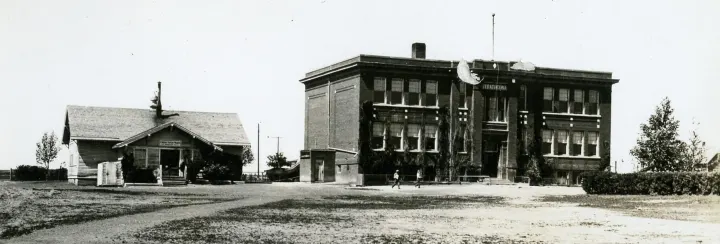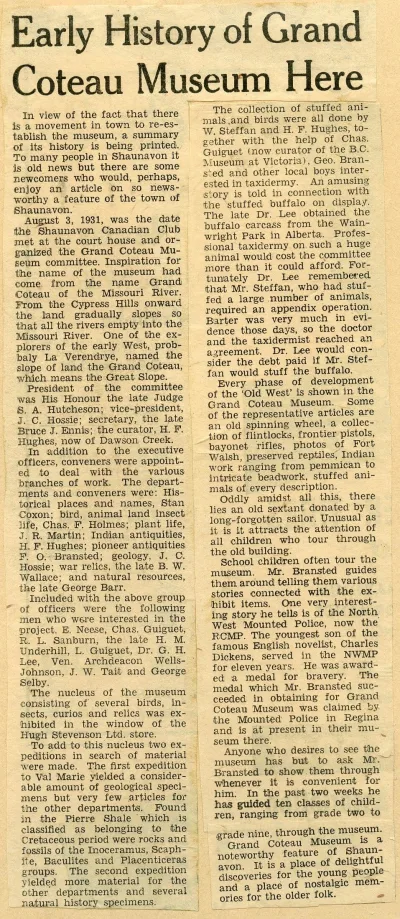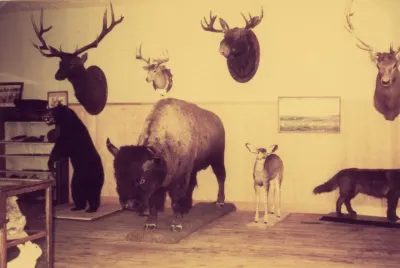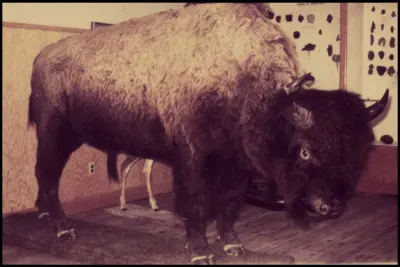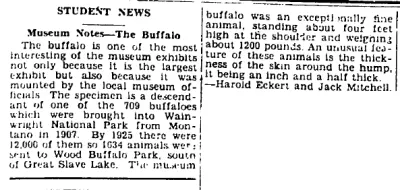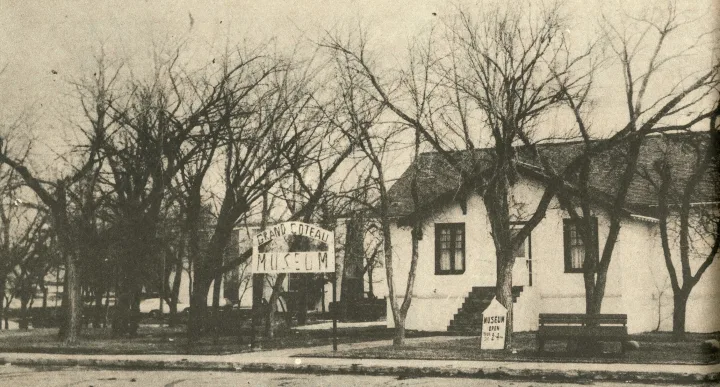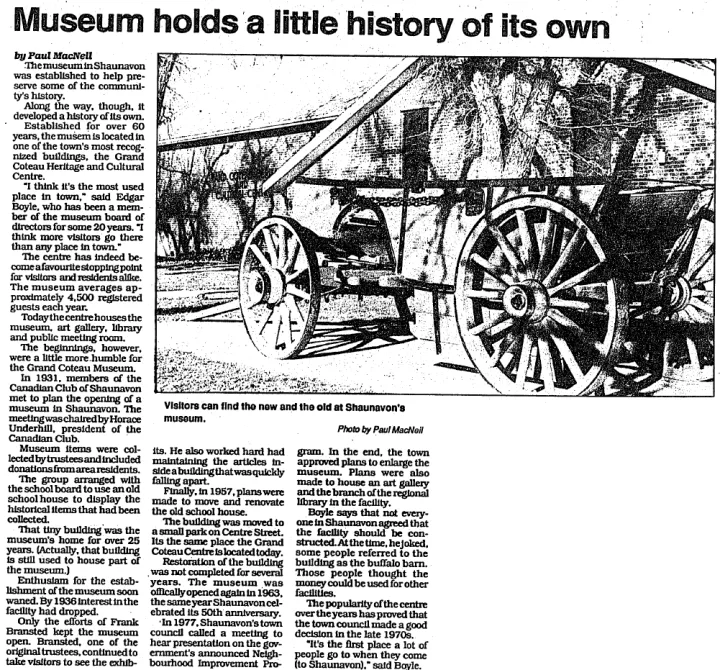The Shaunavon Standard, May 15, 1957
In view of the fact that there is a movement in town to re-establish the museum, a summary of its history is being printed. To many people in Shaunavon it is old news, but there are some newcomers who would, perhaps, enjoy an article on so newsworthy a feature of the Town of Shaunavon.
August 3, 1931, was the date the Shaunavon Canadian Club met at the court house and organized the Grand Coteau Museum committee. Inspiration for the name of the museum had come from the name Grand Coteau of the Missouri River. From the Cypress Hills onward, the land gradually slopes so that all the rivers empty into the Missouri River. One of the explorers of the early West, probably La Verendrye, named the slope of land the Grand Coteau, which means the Great Slope.
President of the committee was His Honour, the late Judge S. A. Hutcheson; vice-president, J. C. Hossie; secretary, the late Bruce J. Ennis; the curator, H. F. Hughes, now of Dawson Creek.
In addition to the executive officers, convenors were appointed to deal with the various branches of work. The departments and convenors were: historical places and names, Stan Coxon; bird, animal land insect life, Chas. F. Holmes; plant life, J. R. Martin; Indian antiquities, H. F. Hughes; pioneer antiquities, F. O. Bransted; geology, J. C. Hossie; war relics, the late B. W. Wallace; and natural resources, the late George Barr.
Included with the above group of officers were the following men who were interested in the project.: E. Neese, Chas. Guiguet, R. L. Sanburn, the late H. M. Underhill, L. Guiguet, Dr. G. H. Lee, Ven. Archdeacon Wells-Johnson, J. W. Tait and George Selby.
The nucleus of the museum, consisting of several birds, insects, curios and relics was exhibited in the window of Hugh Stevenson Ltd. store.
To add to this nucleus two expeditions in search of material were made. The first expedition to Val Marie yielded a considerable amount of geological specimens but very few articles for the other departments. Found in the Pierre Shale, which is classified as belonging to the Cretaceous period, were rocks and fossils of the Inoceramus, Scaphite, Baculites and Placenticeras groups. The second expedition yielded more material for the other departments and several natural history specimens.
The collection of stuffed animals and birds were all done by W. Steffan and H. F. Hughes, together with the help of Chas. Guiguet (now curator of the B.C. Museum at Victoria), Geo. Bransted and other local boys interested in taxidermy.
An amusing story is told in connection with the stuffed buffalo on display. The late Dr. Lee obtained the buffalo carcass from the Wainwright Park in Alberta. Professional taxidermy on such a huge animal would cost the committee more than it could afford. Fortunately Dr. Lee remembered that Mr. Steffan, who had stuffed a large number of animals, required an appendix operation. Barter was very much in evidence those days, so the doctor and the taxidermist reach an agreement. Dr. Lee would consider the debt paid if Mr. Steffan would stuff the buffalo.
Every phase of development of the ‘Old West’ is shown in the Grand Coteau Museum. Some of the representative articles are an old spinning wheel, a collection of flintlocks, frontier pistols, bayonet rifles, photos of Fort Walsh, preserved reptiles, Indian work ranging from pemmican to intricate beadwork, and stuffed animals of every description.
Oddly amidst all this, there lies an old sextant donated by a long-forgotten sailor. Unusual as it is, it attracts the attention of all children who tour through the old building.
School children often tour the museum. Mr. Bransted guides them around telling them various stories connected with the exhibit items. One very interesting story he tells is of the North West Mounted Police, now the RCMP. The youngest son of the famous English novelist, Charles Dickens, served in the NWMP for eleven years. He was awarded a medal for bravery. The medal, which Mr. Bransted succeeded in obtaining for Grand Coteau Museum, was claimed by the Mounted Police in Regina and is at present in their museum there.
Anyone who desires to see the museum has but to ask Mr. Bransted to guide them through whenever it is convenient for him. In the past two weeks he has guided ten classes of children, ranging from grade two to grade nine, through the museum.
Grand Coteau Museum is a noteworthy feature of Shaunavon. It is a place of delightful discoveries for the young people and a place of nostalgic memories for the older folk.


